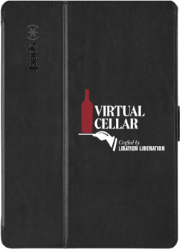What is Virtual Cellar?
Virtual Cellar guides personal consumer preferences through an easy-to-use, interactive, network independent iPad brought to the customer engagement.
When Virtual Cellar is loaded onto a network independent iPad Mini, the fully configurable software drives a company's profits by utilizing a Global Wine information repository allowing any employee abilities similar to an industry expert.
Patent-pending Flavor Sliders™ and Flavor Graph™ personalize, track and record the customer experience linking them to the larger social network and data warehouse.
““No-one front of house has so many productive opportunities - to generate revenue, drive profit, and enhance the dining experience of patrons - as the sommelier.””
What does it do?
Virtual Cellar provides beverage program information through an easy-to-use, interactive, network independent iPad brought to the customer engagement.
A well-trained and educated employee has the potential to increase sales by 20-30%.
Virtual Cellar does that and more.
Will you join us as we revolutionize the way that consumers purchase consumables and companies track their purchases?
How does Virtual Cellar work?
The magic happens as soon as the customer creates their own Personalized Flavor Profile.
The Flavor Profile™ coordinates with your inventory to help your customer have full control over their wine tasting experience. This gives your servers the ability to be an industry expert without years of training. It supports your sommelier program by freeing them up to help your special VIP clientele.
Customers are given the ability to create their own personal account so that when they find businesses using Virtual Cellar, they can log-in and all of their flavor settings will populate along with recommendations based on their Flavor Profile. This process is also integrated with social media, such as Facebook, so customers can “like” items and share them on your wall and with friends with a single tap. When doing this, it tags the producer of the item and the business to that person’s wall.
When signed in, we record all of the customer’s actions and history and help them find that item later, along with being able to write their own notes, reviews, and ratings. This information can be shared in a community setting where they can follow other friends and users, get badges for reviewing “x” amount of products or products in a particular category.
““With wine and liquor sales being the real moneymaker in a restaurant, it is smarter for a restaurant owner to have someone who is educated in those categories.””




